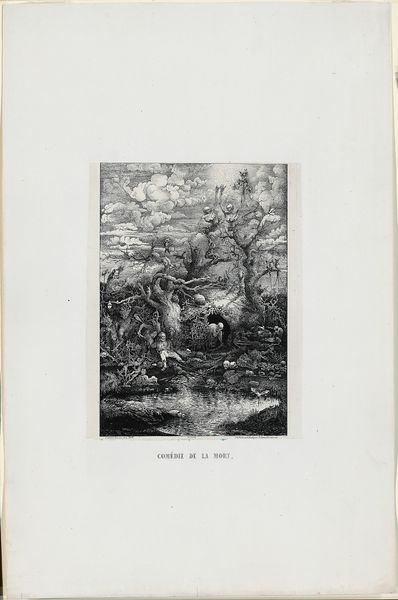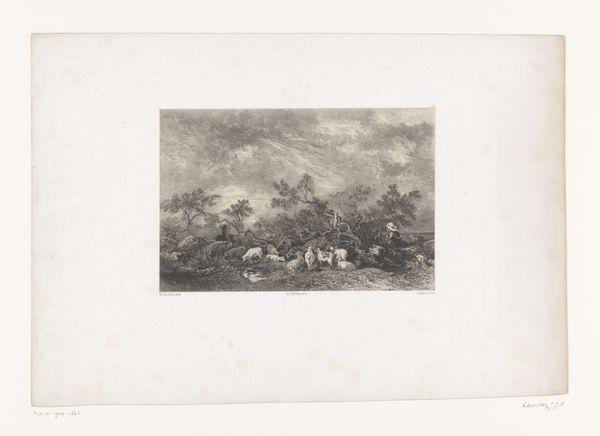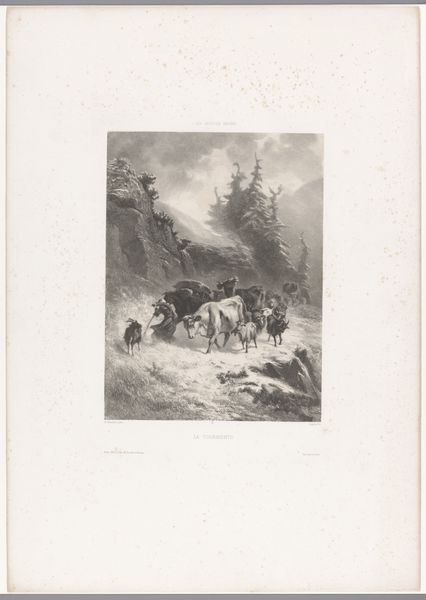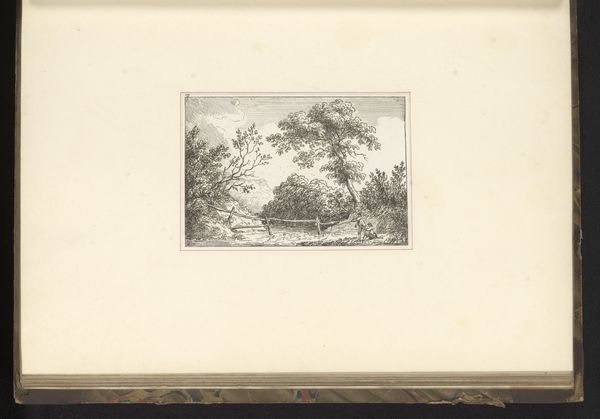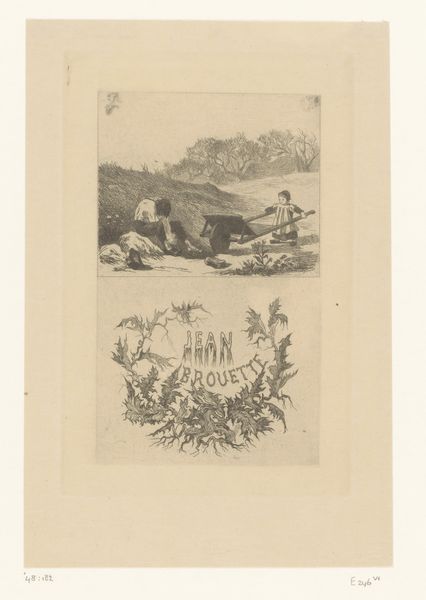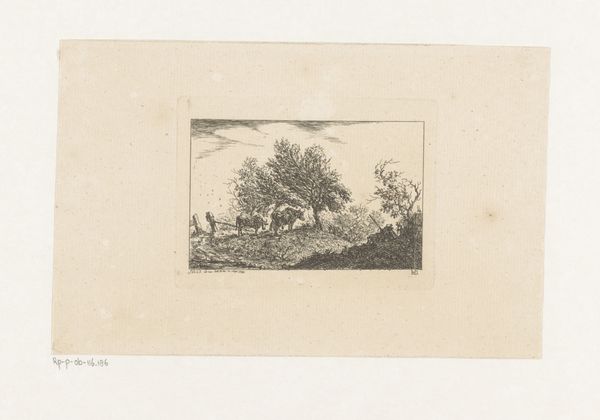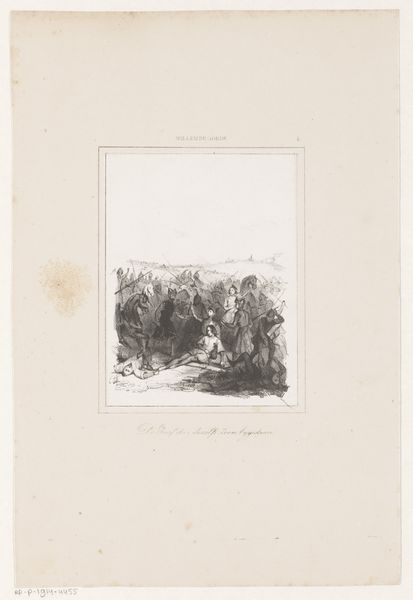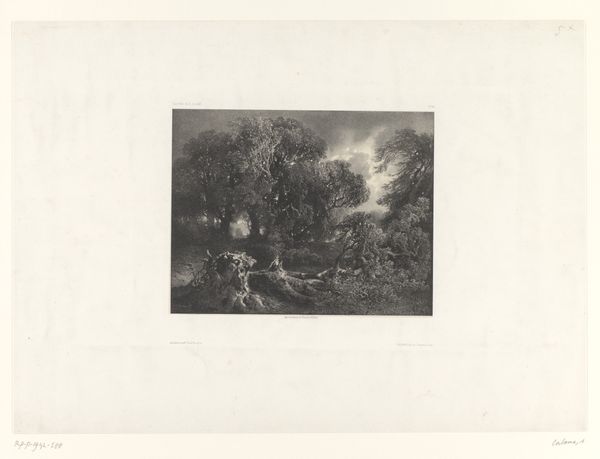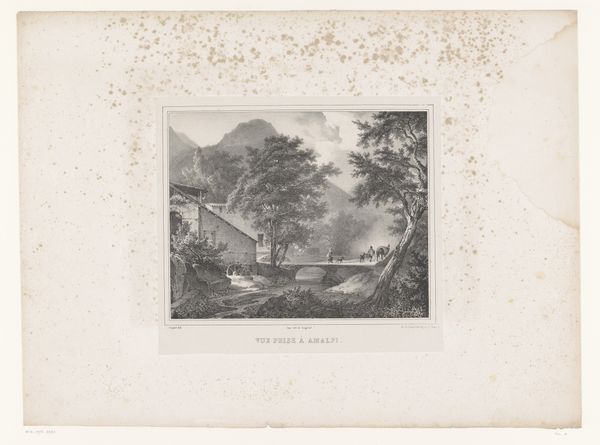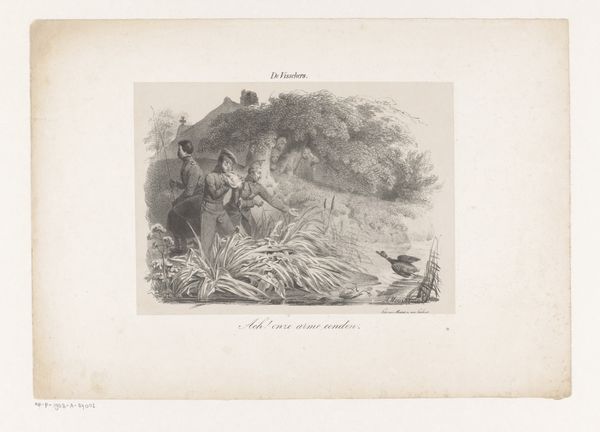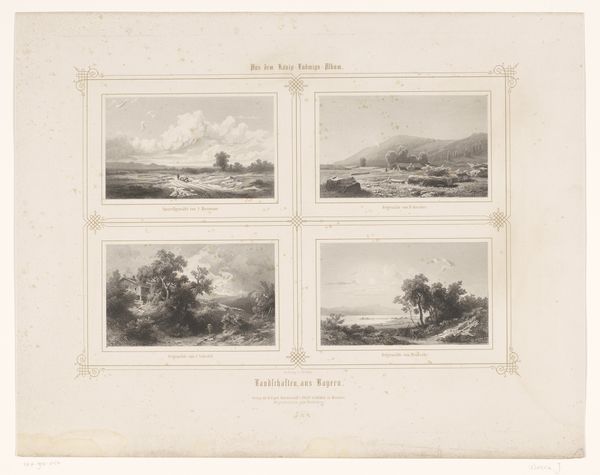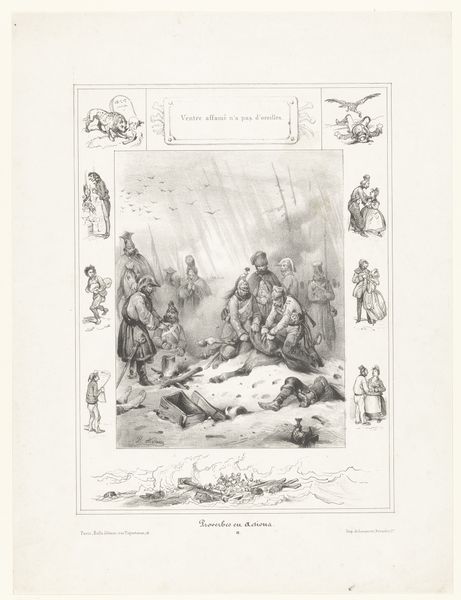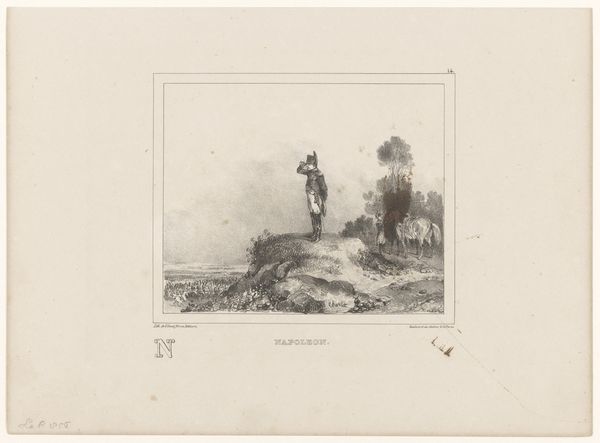
print, engraving
#
portrait
# print
#
landscape
#
romanticism
#
history-painting
#
engraving
Dimensions: height 450 mm, width 314 mm
Copyright: Rijks Museum: Open Domain
Curator: This is an engraving entitled "Studies naar schilderkunst van Claude Joseph Vernet" from 1850, by Charles Nicolas Lemercier. It references and interprets the landscape paintings of Vernet. What's your initial reaction? Editor: There’s a certain... melancholy here. Even in the scenes that should evoke peace, there’s an underlying tension, a kind of pre-storm quietness. The scale, divided into these neat compartments, enhances the feeling of distinct yet connected narratives of vulnerability. Curator: Indeed. Lemercier organizes the engraving into three distinct panels, each a study of Vernet's style. We see representations of pastoral life alongside depictions of coastal dramas. The tonal gradations, achieved through the engraving technique, contribute significantly to the atmospheric depth. Notice the contrast between the delicate hatching in the calmer scenes and the denser, more forceful lines used to portray the stormy seascape. Editor: And each scene feels heavy with symbolism. The first image could speak to idyllic leisure, yet those craggy cliffs loom over the figures, threatening. The figures bathing seem oblivious, but the darkness behind them hints otherwise. And the shipwreck – it’s not just a disaster, it’s the Romantic idea of nature's awesome power crushing human hubris. It taps into the archetypal narrative of man versus nature. Curator: The composition is carefully constructed to guide the eye through the image, highlighting the formal qualities of line, tone, and form. Semiotically speaking, each scene represents an independent, symbolic narrative tied together by the overarching theme of the relationship between humanity and the sublime. Editor: Do you think the engraving technique and medium also enhance these ideas, specifically around vulnerability, loss and temporality? Curator: Certainly, the choice of print medium democratizes the image but it also distances the image from direct reference; this mediated experience invites contemplation of artifice and mimesis. Editor: These aren't mere picturesque scenes; they seem infused with a deeper cultural understanding of mortality and fate. Thank you for allowing me to think aloud about its symbols. Curator: The pleasure was all mine. Considering the piece in terms of pure formal qualities alongside symbolic meanings offers a very compelling appreciation of this romantic composition.
Comments
No comments
Be the first to comment and join the conversation on the ultimate creative platform.

